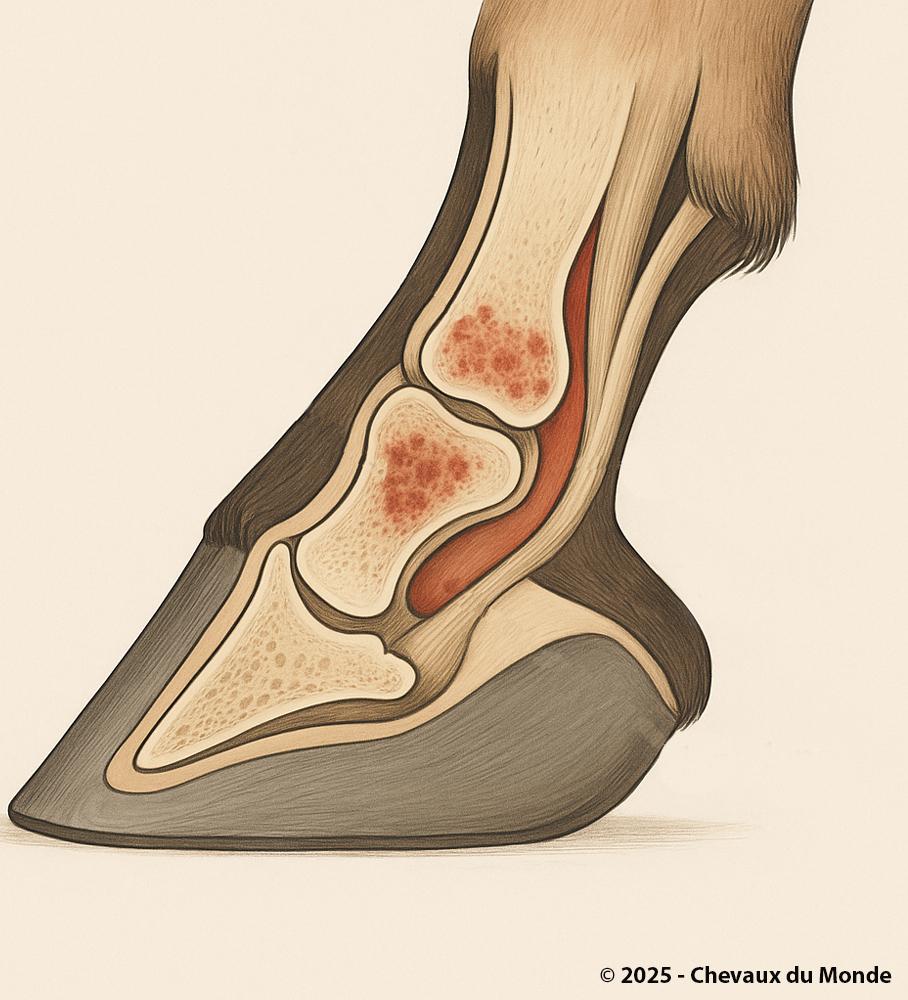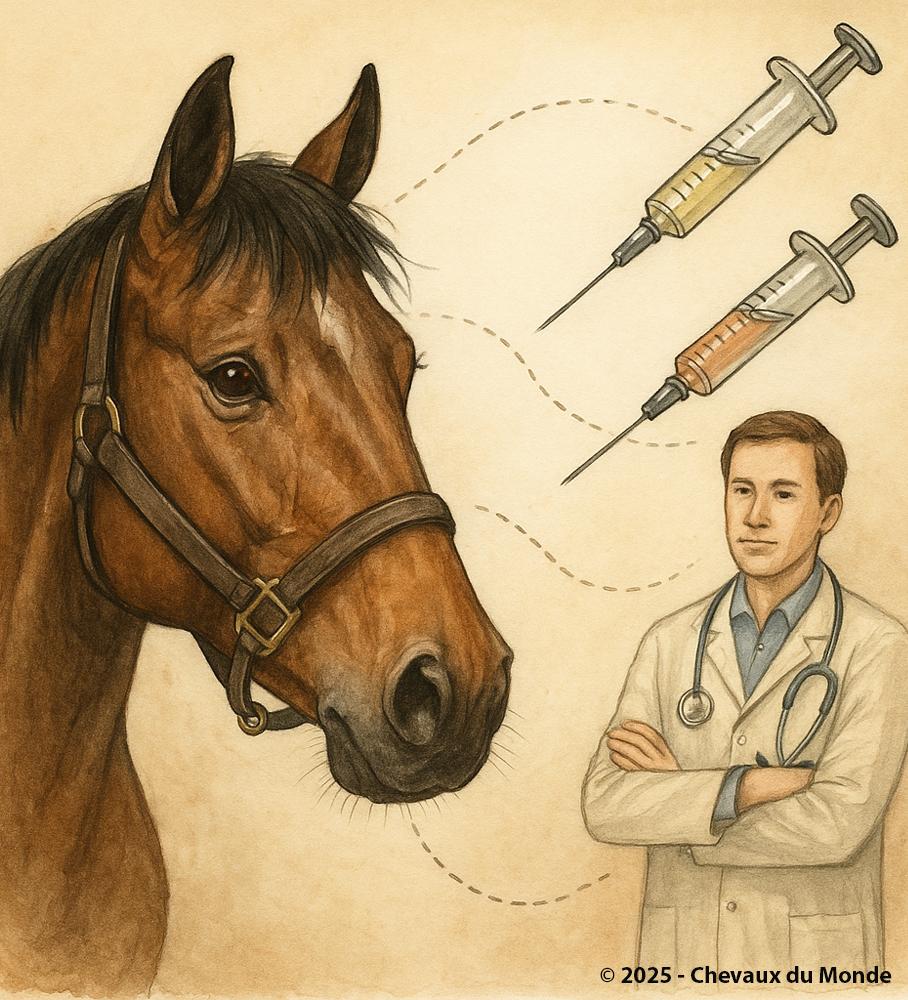NAVICULAR SYNDROME: DIAGNOSIS AND MANAGEMENT

Navicular syndrome: a painful hoof disorder that requires accurate diagnosis and appropriate treatment strategies.
Navicular syndrome, also known as podotrochlear syndrome, is a common condition in sport horses. It is characterized by chronic pain in the foot, often causing insidious and disabling lameness. Understanding this condition, making an accurate diagnosis, and applying appropriate management are essential to preserve the horse’s career and well-being.
Understanding Navicular Syndrome
What is Navicular Syndrome?
- The term refers to all lesions affecting the podotrochlear apparatus (navicular bone, navicular bursa, associated ligaments, deep digital flexor tendon).
- It is not just a bone disease but rather a group of degenerative and inflammatory pathologies.
Risk Factors
- Foot conformation: small feet, underrun or contracted heels.
- Overwork: disciplines such as show jumping, dressage, or reining.
- Ground and shoeing: repeated work on hard surfaces, unsuitable shoeing.
- Genetic predispositions: some sport horse bloodlines are more affected.
Symptoms and Diagnosis
Clinical Signs
- Chronic lameness: often intermittent, worsening after exercise or on hard ground.
- Altered gait: shortened stride, horse appears to “pull” from the shoulders.
- Specific stance: horse seeks to relieve pressure on the heels.
Clinical Examination
- Flexion and hoof tester sensitivity tests.
- Response to diagnostic anesthesia: disappearance of pain after local nerve block.
Complementary Examinations
- Radiographs: show bone changes (erosions, remodeling).
- MRI (Magnetic Resonance Imaging): the gold standard to assess tendon and ligament injuries.
- Ultrasound: useful for visualizing soft tissues.
Management and Treatment
Goals
- Relieve pain.
- Preserve locomotion.
- Slow down lesion progression.
Corrective Shoeing
- Specialized shoeing to reduce pressure on the navicular bone.
- Heel wedges, bar shoes, egg bar shoes, or aluminum shoes depending on the case.
- Involvement of an experienced farrier is essential.
Medical Treatment
- Non-steroidal anti-inflammatory drugs (NSAIDs) for pain management.
- Corticosteroid injections into the navicular bursa.
- Use of bisphosphonates (e.g., tiludronate, clodronate) to slow bone degradation.
Management and Lifestyle
- Reduced intensive work on hard surfaces.
- Alternation between work and rest, with regular turnout.
- Weight control to reduce strain on the feet.
Surgery (as a last resort)
- Digital neurectomy: cutting the palmar digital nerve to eliminate pain.
- → Warning: an irreversible procedure that does not treat the underlying cause.
Prognosis and Prevention
Prognosis
- Variable depending on severity and how early it is diagnosed.
- Many affected horses can continue an adapted career with strict management.
- In severe cases, the prognosis for athletic performance is guarded.
Prevention
- Careful monitoring of foot health and conformation.
- Regular trimming and appropriate shoeing.
- Avoid repetitive, intense work on hard surfaces.
- Early detection of lameness signs.
Conclusion
Navicular syndrome remains a major cause of chronic lameness in sport horses. Diagnosis now relies on increasingly advanced imaging techniques, guiding management strategies. Although the condition is incurable, careful management combining corrective shoeing, medical treatment, and adapted workload often allows the horse to continue its career and maintain good quality of life.






